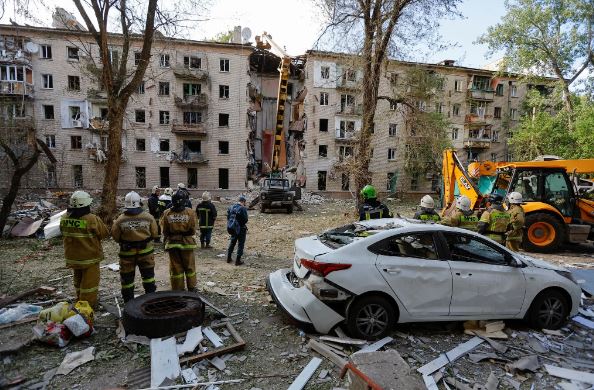President Joe Biden has authorized Ukraine to use U.S.-supplied long-range Army Tactical Missile Systems (ATACMS) for strikes inside Russia, marking a significant policy shift amid rising tensions in the ongoing war. U.S. officials revealed that the weapons are likely to target Russian and North Korean forces in the Kursk region of western Russia, where intense battles threaten Ukraine’s defensive lines.
This decision follows Russia’s unexpected deployment of North Korean troops to bolster its forces, a move that heightened concerns in Washington and Kyiv. The ATACMS, with a range of approximately 190 miles, are expected to give Ukraine a strategic advantage in striking critical military targets, including troop concentrations, supply lines, and ammunition depots deep within Russian territory.
A Controversial Shift in U.S. Policy
President Biden’s approval represents a departure from his previous stance, which restricted Ukraine’s use of U.S.-supplied weapons to its sovereign territory, including Russian-occupied Crimea. The decision reflects the mounting urgency to counter a major assault by an estimated 50,000 Russian and North Korean soldiers aiming to retake territory in Kursk that Ukraine seized in August.
Officials stressed that the move is not expected to fundamentally alter the war’s trajectory. However, it sends a strong message to North Korea about the risks of further involvement in the conflict and signals unwavering U.S. support for Ukraine.
Critics argue the policy shift comes too late. Representative Michael R. Turner, chair of the House Intelligence Committee, stated, “For months, I’ve called on President Biden to remove these restrictions. This decision should have been made earlier.”
Others remain cautious, citing the risk of escalation. U.S. intelligence assessments warn that Russia could retaliate against the U.S. or its European allies through sabotage, cyberattacks, or direct military strikes.
A Strategic Response to Growing Threats
Ukraine’s President Volodymyr Zelensky has long sought permission to use long-range missiles for strikes on Russian soil. While British and French leaders supplied Kyiv with Storm Shadow and SCALP missiles, they were hesitant to approve their use on Russian territory without U.S. alignment.
Zelensky, addressing the situation in a recent speech, refrained from confirming the policy change but emphasized the importance of action over words. “Blows are not inflicted with words. The rockets will speak for themselves,” he said.
The Biden administration’s decision was influenced by concerns over Ukraine’s stretched forces, facing simultaneous Russian assaults in the east, Kharkiv, and Kursk. Officials believe ATACMS could help Ukraine disrupt Russian advances, bolstering its defense and preserving leverage for future negotiations.
North Korea’s Role in the Conflict
Russia’s collaboration with North Korea has added a new dimension to the war. North Korea has reportedly sent over 10,000 troops to aid Russia, and there are indications it may supply long-range ballistic missiles. This alliance has drawn international condemnation and further strained U.S.-Russia relations.
By allowing Ukraine to use ATACMS against Russian and North Korean forces, the Biden administration aims to demonstrate that such partnerships come with consequences.
Balancing Risks and Benefits
Biden’s decision reflects a calculated risk. While proponents argue that the missiles will strengthen Ukraine’s defense and deter further North Korean involvement, critics fear the potential for escalation. The administration has walked a fine line between supporting Ukraine and avoiding actions that could provoke a broader conflict.
Some advisors within the Pentagon had previously opposed providing ATACMS, citing limited U.S. stockpiles and the risk of retaliation. However, Russia’s intensified offensives and Kyiv’s need for enhanced military capabilities ultimately swayed the decision.
The Road Ahead
Ukraine’s use of ATACMS could have significant tactical implications, especially in defending Kursk. However, questions remain about the broader impact on the war. Officials acknowledge that Ukraine’s ability to hold its ground and counter Russian advances will shape future negotiations and the potential resolution of the conflict.
As President-elect Donald J. Trump prepares to take office with a stated goal of quickly ending the war, Ukraine’s leaders hope the new capabilities will strengthen their position. Trump’s proposed approach, outlined by Vice President-elect J.D. Vance, suggests allowing Russia to retain seized Ukrainian territory, a prospect Kyiv vehemently opposes.
For now, Biden’s decision underscores the evolving complexities of the war, with high stakes for Ukraine, the U.S., and the global balance of power.

